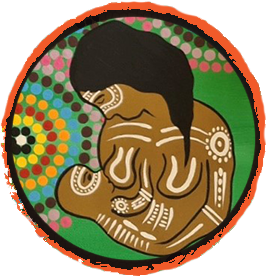Request accessible format of this publication.
Facts about breastfeeding
10 quick facts about breastfeeding

Choosing to breastfeed your baby can result in the following benefits for both mothers and babies:
- Antibodies from breastmilk can protect your baby from illnesses
- Breastmilk can give your baby immunity, the immunity passes from mother to baby
- Less ear infections, colds and chest infections for your baby
- Less sickness and hospitalisations for you baby
- Reduces the risk of SUDI (Sudden Unexpected Death in Infancy) for your baby
- The fats in breastmilk help with your baby's brain development
- Free source of food for your baby and it's available anytime, anywhere and it's all the nutrition they need.
- Reduces the risk of obesity for both mother and baby
- Reduces the chance of diabetes or heart disease for the mother
- Lowers the risk of some ovarian and breast cancers for the mother
How much breast milk your baby needs
Parent's often worry about whether their baby is getting enough to eat, especially in the early days. The table below should help to understand the feeding needs of your newborn baby.
Days 1-2 | 5-7mls About the size of a riberry or a cherry |
Days 3-4 | 20-30mls About the size of a desert lime or a walnut |
Days 5-6 | 45-60mls About the size of a quandong or an apricot |
Beyond | 80-150mls about the size of a Davidson plum or an egg |
Days 1-25-7mls About the size of a riberry or a cherry |
Days 3-420-30mls About the size of a desert lime or a walnut |
Days 5-645-60mls About the size of a quandong or an apricot |
Beyond80-150mls about the size of a Davidson plum or an egg |
Normal nappies for a baby
Parent's also often worry about whether their baby's nappy is normal in the early days. The table below* should help to understand what your newborn baby's nappy might look like.
Day 10-24 hours | Sticky green - black poo |
Day 224-48 hours | Soft green - black poo |
Day 348-72 hours | Greenish - brown poo |
Day 472-96 hours | Lighter greenish - brown or mustard yellow poo |
Day 5 and beyond96 or more hours | Mustard yellow poo 5 or more wet nappies |
Other things to note | Red-Orange Wet Nappy - This is normal in the first few days. If this happens after Day 3, consult your midwife or Aboriginal Health Worker. Watery Poos - 10 or more watery nappies can mean too much breastmilk. Consult your midwife or Aboriginal Health Worker. |
Day 10-24 hours Sticky green - black poo |
Day 224-48 hours Soft green - black poo |
Day 348-72 hours Greenish - brown poo |
Day 472-96 hours Lighter greenish - brown or mustard yellow poo |
Day 5 and beyond96 or more hours Mustard yellow poo 5 or more wet nappies |
Other things to noteRed-Orange Wet Nappy - This is normal in the first few days. If this happens after Day 3, consult your midwife or Aboriginal Health Worker. Watery Poos - 10 or more watery nappies can mean too much breastmilk. Consult your midwife or Aboriginal Health Worker. |
*The above information was sources from the Australian Breastfeeding Association “Normal Nappies: What to expect” handout.